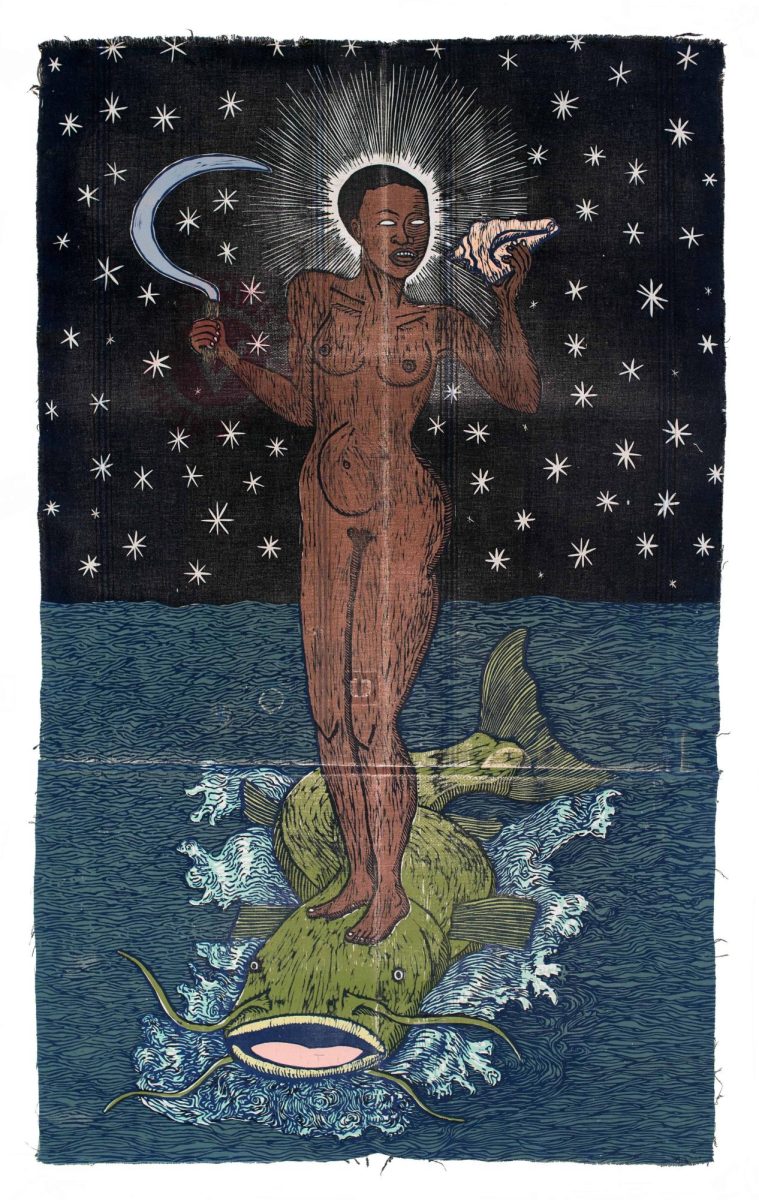Even though the existence of humankind is dependent on sex, it has always been a taboo topic of discussion.
The entire history of art, from ancient to contemporary, has portrayed sex in very overt ways, bringing the subject of sex into the institution of art museums. Because of the lack of recorded history about sex, these frank depictions of sexuality in art visually uncover the way sexuality was viewed over time. These works of art can help us understand attitudes towards sex as they were transformed and shifted geographically through time.
Studying erotic art exposes the open attitude ancient Romans had towards sex. Statues, frescoes and household decorative items from ancient Rome prove that sex was an integral part of their everyday lives and that they were not afraid to show it.
The Secret Museum in Naples exhibits ancient Roman works of people having sex, phallic statues and beastiality, which is sexual relations between a human and an animal. Although the ancient Romans were seemingly comfortable with sex, the museum is called The Secret Museum because King Naples I of Naples deemed the works inappropriate and demanded they be locked away. Art’s attempts to comfortably illustrate sex have been historically shunned and disapproved because it is considered taboo.
Hump Day: Your questions on long distance, sexual exploration answered
Mesopotamian art (c. 4500-539 BCE), like ancient Roman art, portrayed sex openly. Observing these works reveals the sex customs in the culture as well. For example, it was a custom for every woman to perform a specific type of prostitution at least once in their life. This ritual was for women to sit outside the Temple of Ishtar and have sex with a man who chooses them. Mesopotamian plaques frankly evoke people having sex as well as this ritual of prostitution.
Western culture is particularly known to disapprove of open sexuality. But, Western artists rebelled against this notion, especially with the introduction of Modernism. Prior to what we call Modern art (1860s-1970s), was the Renaissance in Europe. Renaissance art is typically more discrete with depictions of sex and sexuality. Because it is inspired by classical antiquity, nudity is common among the works. This portrayal of nudity is not shunned because it depicts religious figures and figures of the past.
As a response to urbanization and industrialization, Modern art took a major turn from classical antiquity, which created a shift in subject matter. This introduced illustrations of what were contemporary figures rather than ancient ones. Suddenly, sex and nudity were deemed inappropriate and tasteless. Modern artists have intentions of being radical, disregarding this response to their work.
Modern artists in Europe explored how the rapid urbanization and industrialization of the time period commodified sex and alienated figures of the modern. Egon Schiele frankly depicts sex to address this condition of modernism in his work “Two Women Embracing” (1915). The drawing portrays two women being sexually intimate in front of a blank background.
Although the figures are embracing, the perspective and the background make them appear as if they are floating in a space of loneliness and alienation. This melancholy feeling of isolation that stems from modernization is a condition that Modern artists repeatedly evoked. Schiele expresses this feeling through a depiction of sex to elicit that even in the highest forms of intimacy, feelings of loneliness exist.
“Two Women Embracing” and the rest of Schiele’s works were extremely radical for the time. In fact, Schiele was forced to spend time in jail as a pornographer. His frank representations of sexuality were so incredibly radical because of his depictions of modern subjects and lesbianism. Schiele revolutionarily instigated a discussion about sex and sexuality in the Western world where it had been neglected and shunned.
Following Modern art is what we call Contemporary art, which was produced from the late 20th century to the 21st century today. Performance art was a medium introduced with Contemporary art. The medium aimed to create a bodily encounter between the artist and the viewer. Many performance artists took advantage of the live relationship between artist and viewer to bring sex into their workplace.
A lot of performance art would be considered abject art — art that works to introduce the bodily functions that are silenced and taboo into the museum. When a viewer encounters an abject work of art, they are forced to think about their own body and what they repress everyday. Abject artists oftentimes work with the concept of sex in an attempt to dismantle its history as something forbidden and address issues about sex and sexuality.
Vito Acconci’s abject work titled “Seedbed” (1972) encounters the viewer in a shocking and vulnerable way. It was a performance piece in which Acconci said sexual comments to the audience members walking past a little wooden square in the corner of a museum. During the performance, he hid under a ramp so the viewers could hear his vulgar comments out of a speaker yet they could not see him. Under the ramp, Acconci was masturbating to those who encountered the wooden square. By making the repressed sexual act of masturbation a public performance, Acconci attempted to break stigmas about sex while simultaneously addressing issues of sexual objectification.
The Contemporary artist Carolee Schneemann evoked sex through performance art as well. In her 1964 performance “Meat Joy,” men and women wrestled sexually with meat in an orgy encounter. She provoked the viewer to look at sex in a profoundly unusual way. Through this seemingly odd performance, Schneemann confronted the audience with this overt sexuality in an attempt to reject the notion that sex should be repressed.
Throughout the history of art, sex has been evoked in ways that simultaneously challenge, repress and embrace its notions. From ancient art to contemporary, artists have continuously worked to make sex a comfortable topic that should be embraced and addressed openly.




















